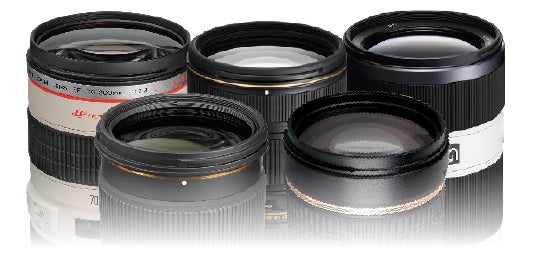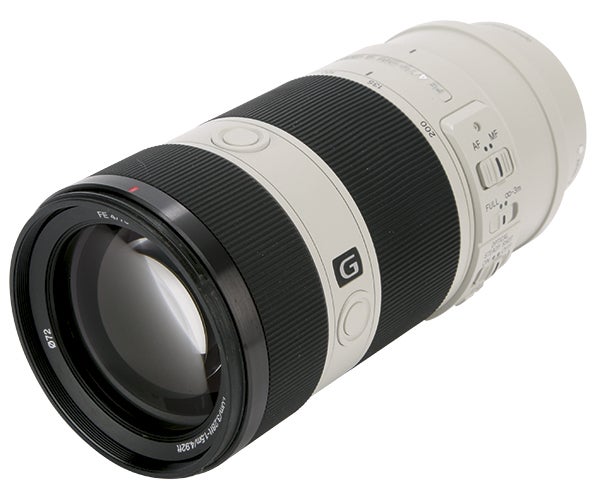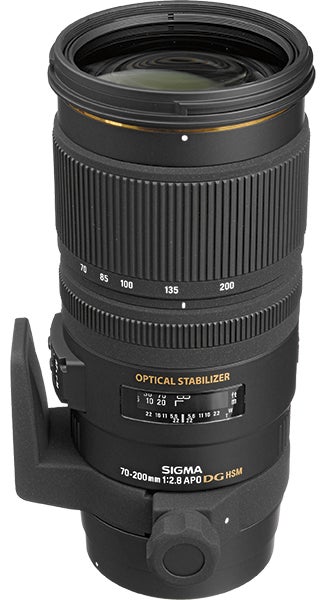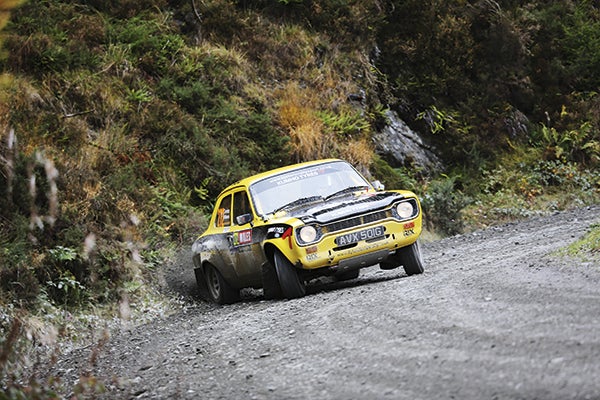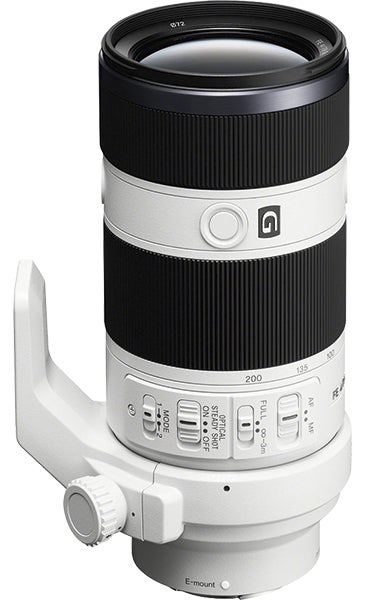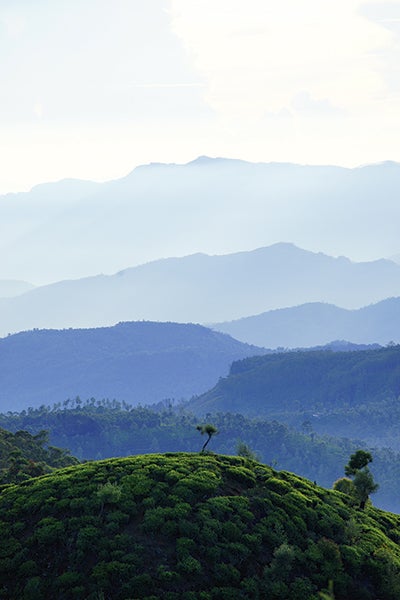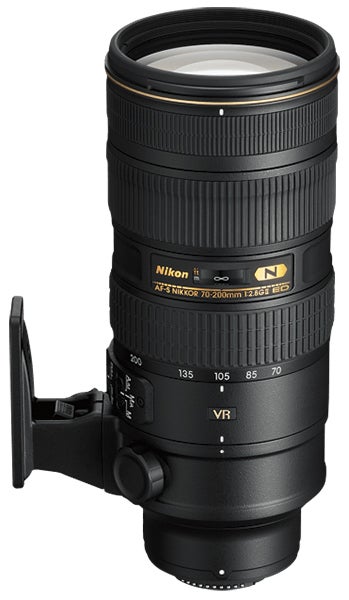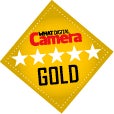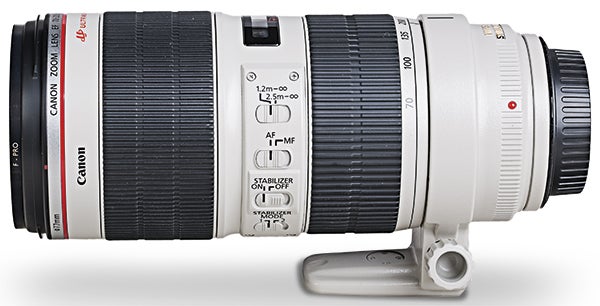Here's our choice of the 5 best 70-200mm tele-zoom lenses.
Fast, full-frame 70-200mm telephoto zoom lenses are a favourite of wedding, portrait and event photographers. It’s a focal length that’s practical for so many different situations and as well as allowing you to get closer to the action, they enable you to dial in a fast aperture at any point in the focal range.
If you’d like to shoot at f/2.8 in low light, create images with an extremely shallow depth of field or capture candid shots by working inconspicuously from distance, you’ll definitely want a 70-200mm f/2.8 lens stowed away in your bag. While the lenses we’re looking at are all designed for use on a full-frame camera, those using the APS-C format will still be able to use them and enjoy a slightly longer focal range, which can be ideal for more distant subjects, such as wildlife and sports.
Key points of a 70-200mm tele-zoom lens
Build quality
Look for a solid and robust build quality. Weather-sealing will help to keep dirt and moisture at bay.
Switches
A focus limit switch is useful to have. It helps improve both the speed of focus and the accuracy by assuming you are only interested in subjects within the range you have selected.
Weight
70-200mm telephoto lenses are notorious for being quite heavy. The lightest in this round-up weighs 840g.
5. Tamron SP 70-200mm f/2.8 Di VC USD £929
Key specs
Lens mount: Canon, Nikon, Sony
Filter diameter: 77mm
Lens elements: 23
Groups: 17
Diaphragm blades: 9
Aperture: f/2.8-f/32
Minimum focus: 1.3m
Length: 196.7mm
Diameter: 85.8mm
Weight: 1,470g
Available in Canon EF, Nikon F and Sony Alpha mounts, this Tamron zoom measures 196.7mm long and weighs 1.47kg. It’s one of the shortest and lightest lenses in this group, although the difference in size and weight between these bulky lenses is hard to notice.
Its barrel is made of high-quality plastic, rather than the metal of the proprietary brand versions. So while it is well made, it may turn out to be less durable.
A key difference between the proprietary and third-party lenses is that the zoom ring on the third-party lenses is at the front, while the focus ring is closer to the rear. This set-up works well because both rings are in close proximity – the hand can comfortably remain in the same place and access both rings, whereas the brand lenses require more of a stretch between them.
Each ring on this Tamron lens is beautifully dampened for a smooth rotation. Like some other zooms, the focal-length ring on the Tamron lens rotates anti-clockwise, from 200mm to 70mm. Canon owners using the Tamron lens will need to adjust to an opposite rotation.
Two switches on the side of the lens barrel represent a simple control over stabilisation and focusing. One switch changes between auto and manual focus, while the other turns Vibration Correction on and off.
Unlike the brand lenses, the Tamron and Sigma models do not feature a focus-distance limiter switch, which is a useful control for reducing the range the lens must ‘hunt’ to find focus on its subject.
The Vibration Compensation (VC) system allows you to shoot up to four stops slower than is otherwise possible and the construction consists of 23 elements in 17 groups, including four low-dispersion (LD) elements and one extra-low-dispersion (XLD) element to effectively control chromatic aberrations.
The Ultrasonic Silent Drive (USD) AF motor performs quietly and speedily. In a comparison with the Canon 70-200mm zoom, it’s hard to discern a difference in speed.
Pros
- Vibration Compensation (effective to four stops)
- Smooth and quiet AF
Cons
- Barrel is made of plastic rather than metal
4. Sigma 70-200mm f/2.8 EX DG OS HSM £799
Key specs
Lens mount: Canon, Nikon, Pentax, Sigma, Sony
Filter diameter: 77mm
Lens elements: 22
Groups: 17
Diaphragm blades: 9
Aperture: f/2.8-f/22
Minimum focus: 1.4m
Length: 197.6mm
Diameter: 86.4mm
Weight: 1,430g
Sigma has established a reputation for building excellent-quality lenses that cost less than proprietary versions. The company’s 70-200mm lens is by far the least costly in this group, at about £799.
Announced in 2010, the lens is available in Canon EF, Nikon F, Sony Alpha, Pentax K and Sigma mounts. At 1,430g, it’s one of the lightest in the group, but is still quite a weight to carry around. It is a long lens, too, at 197mm, but the good news is that it does not rotate or extend during zooming.
The zoom ring rotates clockwise from 200mm to 70mm, which matches the operation of Canon’s 70-200mm lens. Changing from 70mm to 200mm can be made in a single turn. However, the rotation of the zoom ring could do with a little more resistance, as it turns a little bit too freely.
Unsurprisingly, given its lower price point, the overall feel of the lens is good without being class-leading. The barrel’s high-quality plastic has a smooth finish unlike any DSLR, and the lens does not feature weather-sealing like the Nikon and Canon versions.
Supplied with the lens is a large hood measuring 107mm. Like the Tamron lens, the hood’s interior is ridged to reduce reflections.
A simple two-switch set-up on the side of the lens is for AF/MF and stabilisation. The latter has three options: off, single-axis panning and dual-axis stabilisation.
The lens construction comprises 22 elements in 17 groups, two of which are ‘F’ low-dispersion (FLD) elements (similar to Canon’s fluorite element), and three special low-dispersion (SLD) elements. The focus group of lens elements is at the rear of the lens, hence the front-end zoom ring.
Like most of the other lenses in the group, this Sigma model offers an Optical Stabiliser that allows the use of shutter speeds up to a claimed four stops slower than a non-stabilised equivalent.
The lens uses Sigma’s Hyper Sonic Motor (HSM), which provides quiet AF. Autofocus speed when compared directly to the Nikon lens is not quite as responsive, but it is quick nonetheless.
Pros
- Good build quality for the price
- Relatively lightweight
Cons
- No weather sealing
- Zoom ring rotates quite freely
3. Sony FE 70-200mm f/4 G OSS £949
Key specs
Lens mount: Sony FE
Filter diameter: 72mm
Lens elements: 21
Groups: 15
Diaphragm blades: 9
Aperture: f/4-22
Minimum focus: 1.5m (AF)
Length: 175mm
Diameter: 80mm
Weight: 840g
The key specification of this lens is its maximum aperture of f/4 rather than f/2.8. The reason for this choice on Sony’s part is obvious. A larger aperture means more glass, and therefore a larger and heavier lens that would simply dwarf the Alpha 7-series cameras it is designed for, and go against the philosophy of having a small, light, full-frame camera.
Optical SteadyShot image stabilisation helps to reduce camera shake, with a mode switch at the side setting the stabilisation to either active and passive. Other switches on the side of the lens include a ‘3m to infinity’ focus range limiter and an AF/MF toggle.
The professional-looking white/grey gives this lens an appearance similar to a Canon L-series optic, and it has the dust and water-resistance to match. Weighing 840g, the lens feels extremely solid in the hand, and both the focus and zoom barrels are large and feature ribbed rubber grips that make them easy to turn smoothly and precisely. The catch – if you wish to call it that – is that the manual focusing is electronic fly-by-wire, so a turn of the focus ring starts a motor to focus the lens. Those who prefer a truly tactile response may not be fans, but for the few times that most will use manual focus, I found it responsive enough not to be an issue. On the plus side, the lens focuses internally, so it’s no hassle using circular polariser filters.
Autofocusing is fast and quiet, though I would expect it to be at its best on the Alpha 7, with its faster hybrid phase-detection AF system, than the slightly slower contrast-detection AF as found on the original Sony Alpha 7R.
The depth of field created when shooting at f/4 is satisfactory for most subjects, to the extent that I didn’t notice the fact that the lens doesn’t have a larger f/2.8 aperture. Similarly, the optical stabilisation works very well indeed. Using the lens with the Alpha 7R provides a further benefit. The camera’s 36.4MP resolution drops to 15.3MP in its APS-C crop mode, and when used like this, Sony’s 70-200mm zoom is given the equivalent field of view as a 105-300mm lens.
Pros
- Excellent image quality
- Optical stabilisation system works well
- Fast and quiet AF
Cons
- Harsh vignetting at 70mm and f/4
- Fly-by-wire manual focusing may not suit everyone
2. Nikkor AF-S 70-200mm f/2.8G ED VR II £1579
Key specs
Lens mount: Nikon F
Filter diameter: 77mm
Lens elements: 21
Groups: 16
Diaphragm blades: 9
Aperture: f/2.8-f/22
Minimum focus: 1.4m
Length: 206mm
Diameter: 87mm
Weight: 1,540g
Every now and again there comes a lens that bears a new feature for which there is no obvious demand and which seems to have been included either to trump another brand or to prove manufacturing prowess. Nikon’s new 70-200mm f/2.8 pro-spec zoom, with its three-mode focusing system, may be just such a lens.
Nikon’s lens is a tad uncomfortable to use owing to the extended height of its tripod-mounting pillar, which pushes the zoom ring just out of comfortable reach. This is exacerbated by the position of the zoom ring, which is a shade further forwards than would be ideal thanks to the fact that the four slider switches, which control the focusing and anti-blur settings, are located rearmost.
The extra height has been caused by a tripod-collar quick-release mechanism, which might be a boon for some users but merely introduced a little handling awkwardness for me. Similarly, the three-mode focusing slider, which adds an M/A mode to the usual A/M and M modes, is tricky to use. It’s easy enough to set pure MF by sliding the switch right back, or to set AF with full-time manual intervention by sliding the switch fully forward, but the middle position is rather hard to locate.
According to Nikon, A/M is AF-priority with manual intervention whereas M/A is AF with MF priority. Apparently, setting A/M makes the lens less sensitive to manual disturbances of the focusing ring (hence AF priority) but it is difficult to detect a significant difference between the two variants.
As is the norm, Nikon offers anti-blur settings that combat camera-shake in a specific direction that allows panning to be used (Normal Mode) and camera-shake in all directions (Active Mode). Nikon suggests that Normal mode will be appropriate in most situations.
Technical testing revealed this lens to deliver excellent sharpness through its focal range. Though the images it produces are great, the tripod-mounting pillar could do with being modified to improve the way that the zoom sits in the hand.
Pros
- Produces excellent image quality
- Robust build quality
- Normal & Active VR modes
Cons
- Handling is a touch uncomfortable
1. Canon 70-200mm f/2.8L IS II USM £1499
It has a hefty price tag, but it’s up there as one of the finest Canon telephoto zooms
Key specs
Lens mount: Canon EF
Filter diameter: 77mm
Lens elements: 23
Groups: 19
Diaphragm blades: 8
Aperture: f/2.8-f/32
Minimum focus: 1.2m
Length: 199mm
Diameter: 89mm
Weight: 1,490
This lens was originally tested soon after its release in 2010 and returned a stunning set of MTF curves.
Handling is excellent: the lens is perfectly balanced on a full-frame DSLR such as the Canon EOS 5D Mark III and feels equally as good coupled to an enthusiast APS-C model, with which it’s equivalent to 112-320mm. It’s natural to support the lens under its removable tripod-mount collar and all the major controls are within finger-tip reach. The substantial lens hood can get in the way when it’s reversed for storage but, except in absolute emergencies, the hood should always be deployed both to protect the front element from accidental knocks and improve image quality.
The zoom ring is centrally located and offers just the right amount of resistance across its throw, which amounts to about 75° of rotation. The manual-focus ring is further forward, just out of comfortable touch but easily reached with only the slightest shift of grip. Both rings have tactile rubber surfaces.
A focused-distance window and four slider switches separate the two rings. Canon has designed the lens with a raised bevel around the IS on/off switch, allowing immediate identification of this control without visual inspection. The IS mode switch is equally easy to identify because it is the only slider below the on/off switch. The AF/MF switch is just above the IS on/off switch while the uppermost slider changes between full-focus (1.2m to infinity) and restricted-focus (2.5m to infinity).
There is nothing to fault in the autofocus system, which is quick to acquire focus, is nice and quiet and allows manual intervention at any time. Thanks to its internal-focusing mechanism the MF ring remains stationary unless acted on deliberately. Similarly, the IS system is also outstanding in its quietness and unobtrusive action.
Less obviously, but unsurprisingly given its professional specification, the lens is sealed against dust and water intrusion. This is good news for those who put themselves at risk of getting caught out in a downpour.
As mentioned earlier, technical MTF testing returned excellent results except for a slight dip when the lens is used wide-open and when it is fully stopped-down at all focal lengths. The minimum aperture setting (f/32) should be avoided if you want to preserve the best levels of sharpness and prevent diffraction from softening any fine detail. Slight chromatic aberration was visible at 70mm, but you’ll have your work cut out in order to notice it in real-world pictures at anything less than 100%.
Overall, this is an excellent lens, but there is no denying the fact that it is a costly one. It is around £400 cheaper now than it was at the time of launch. Determining whether or not its price is justified is not the purpose of this review but either way the lens is also big and heavy. It is possible that some users who could afford to buy this lens might be dissuaded by its size and mass but for others these things might simply offer more reassurance of a professional build quality.
It’s a must-have lens for any Canon wedding photographer.
Pros
- Fast, accurate and reliable autofocus
- Impressive sharpness through the aperture range
- Build quality
Cons
- Diffraction at f/32
- Large and heavy
- Lens hood can get in the way when carried in a bag





